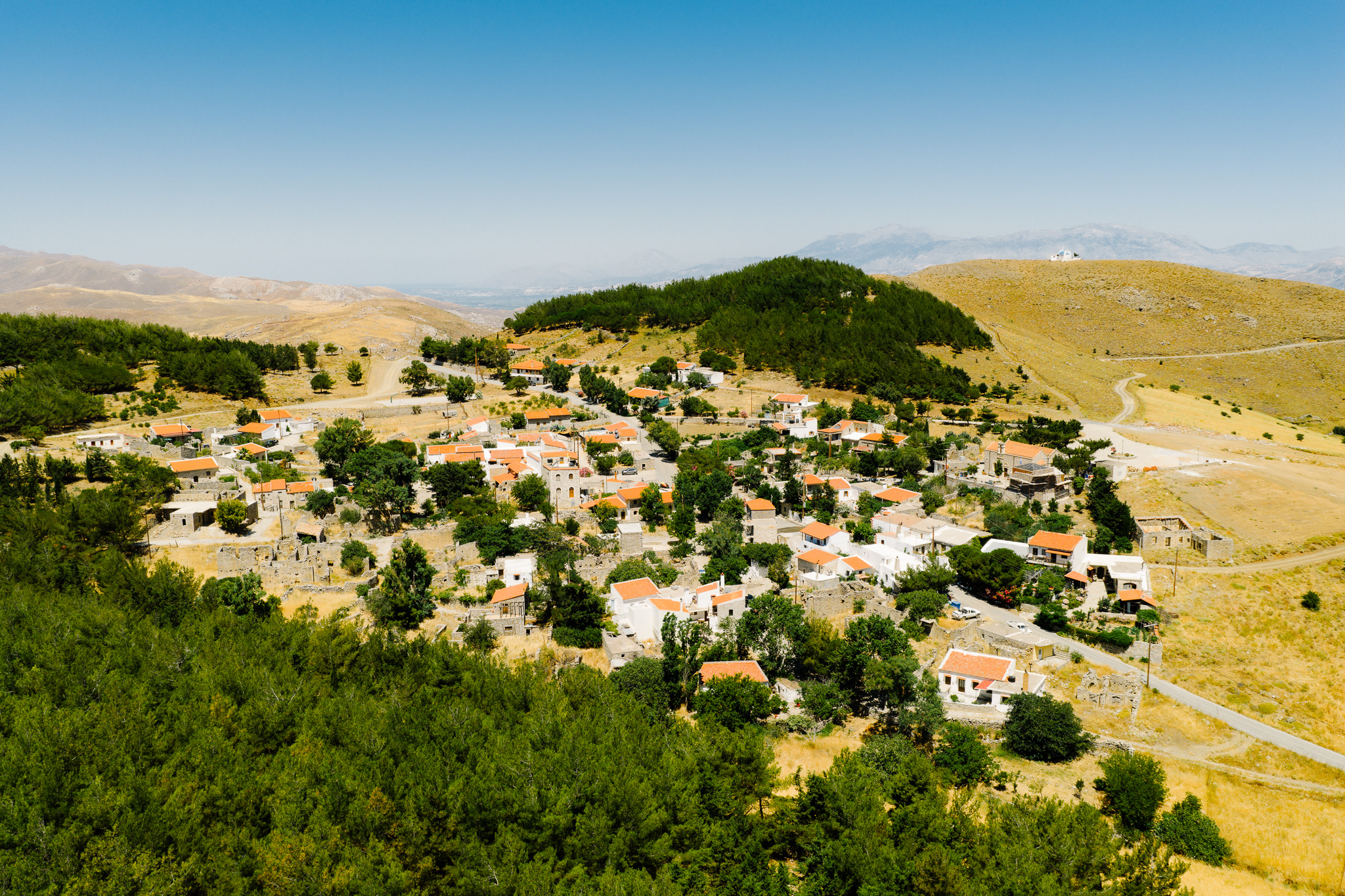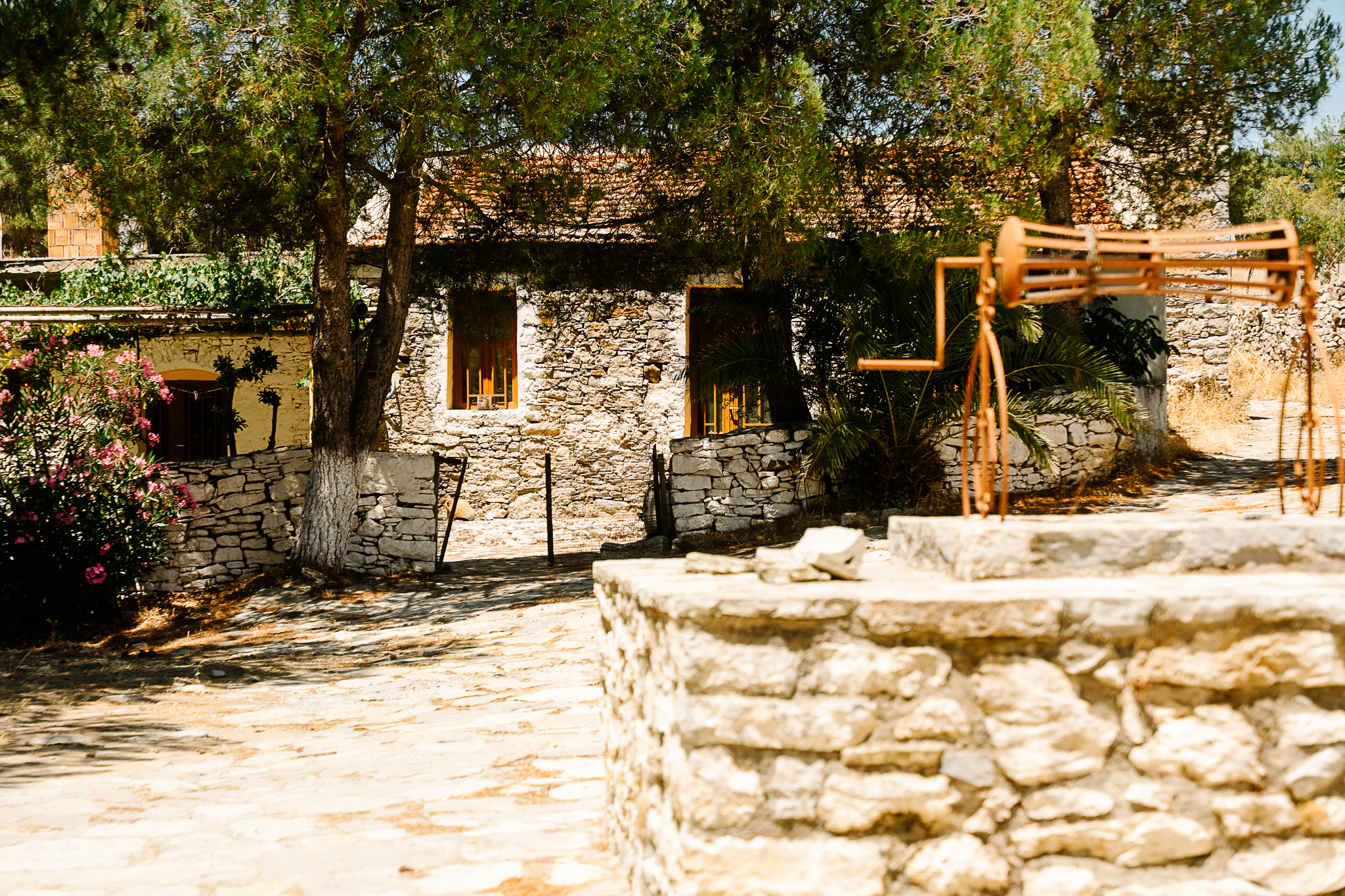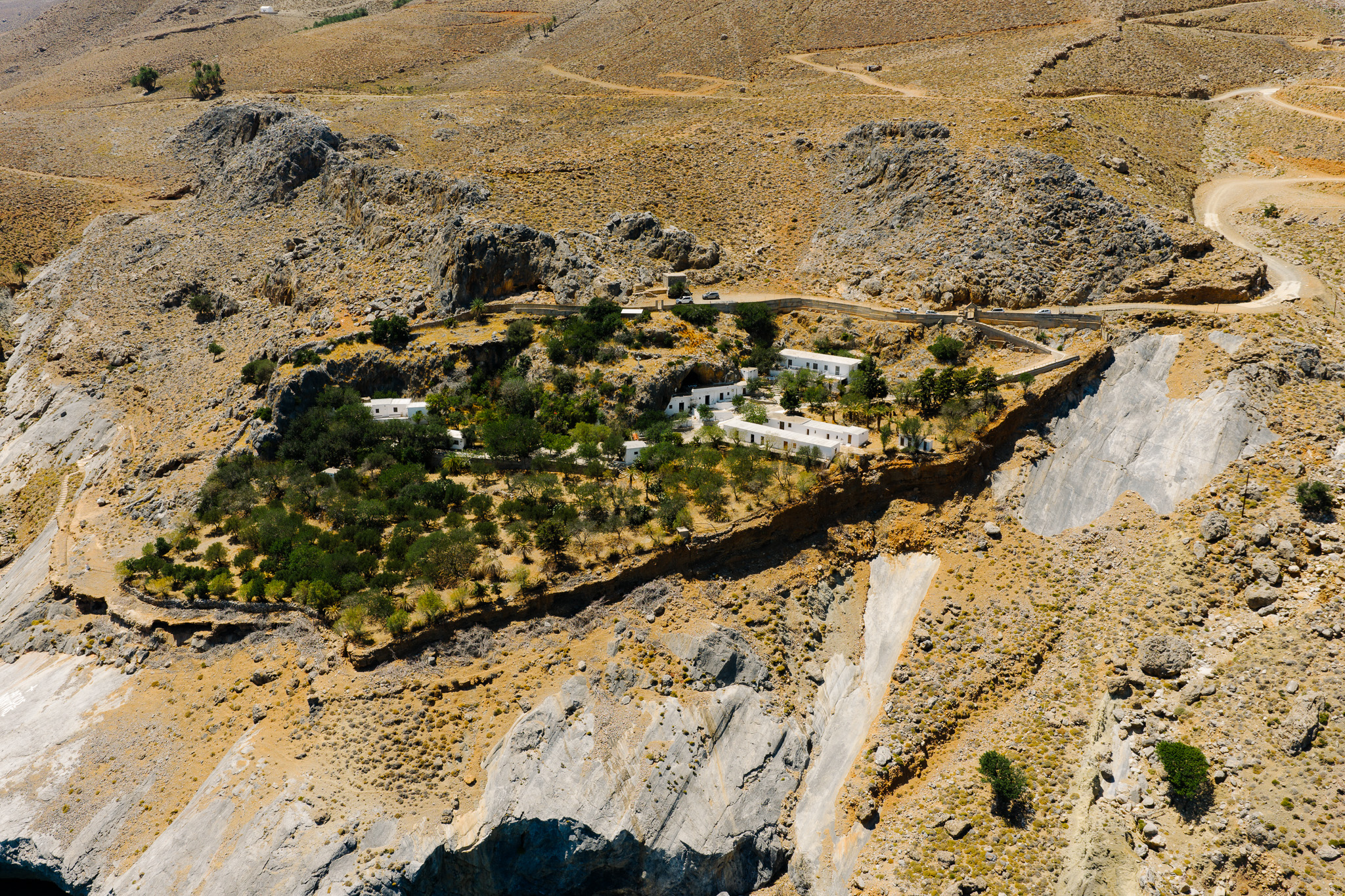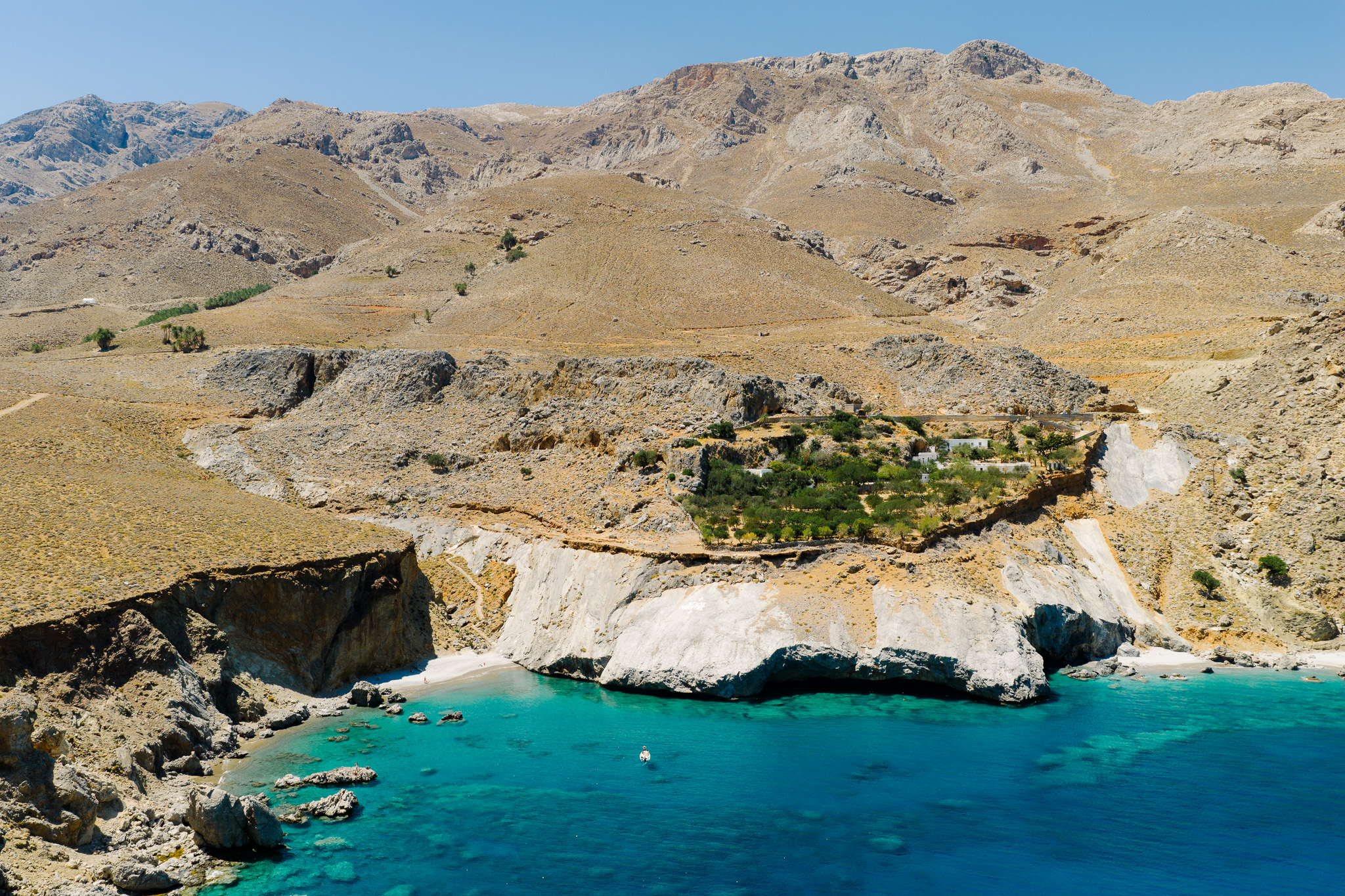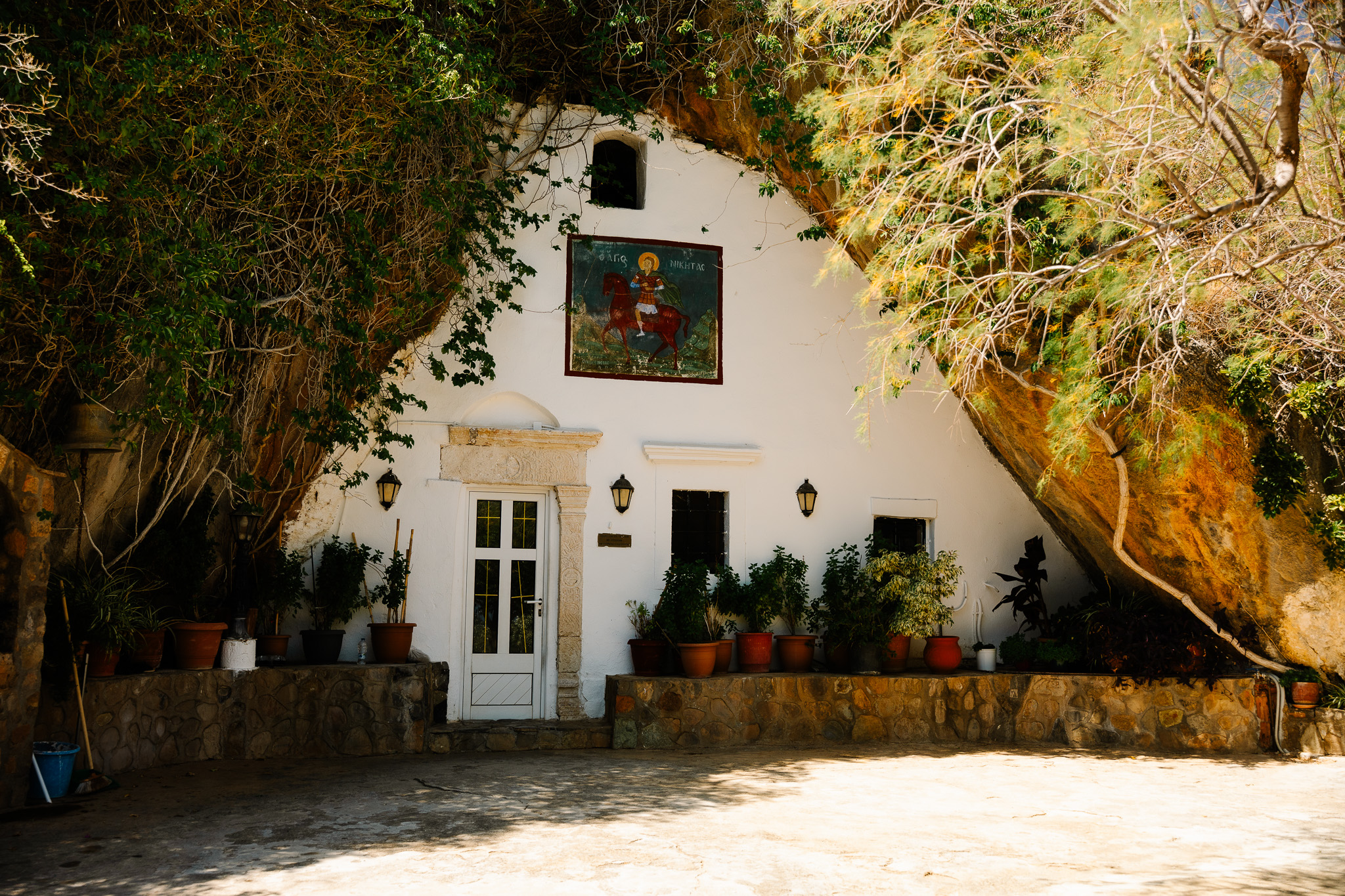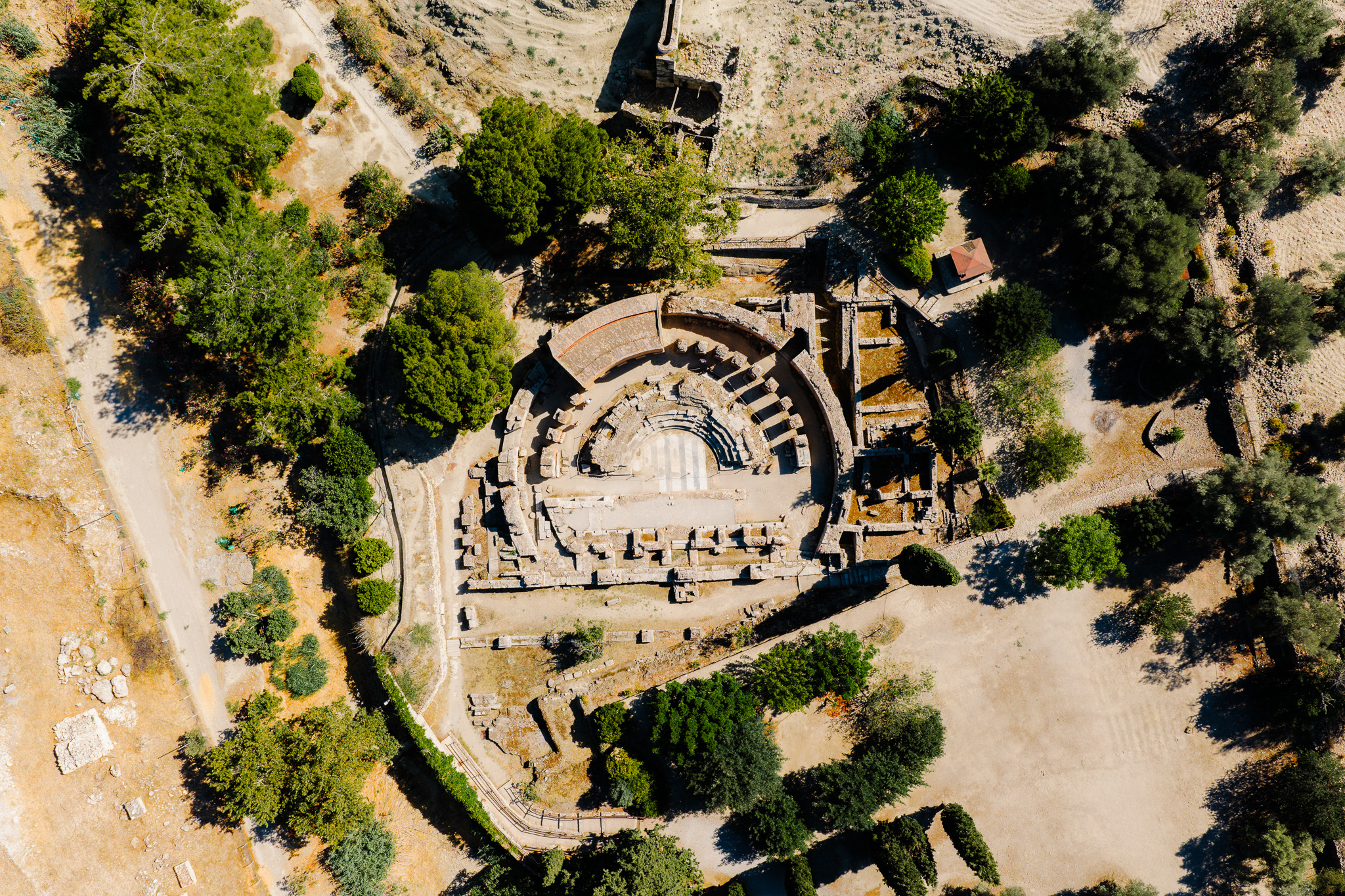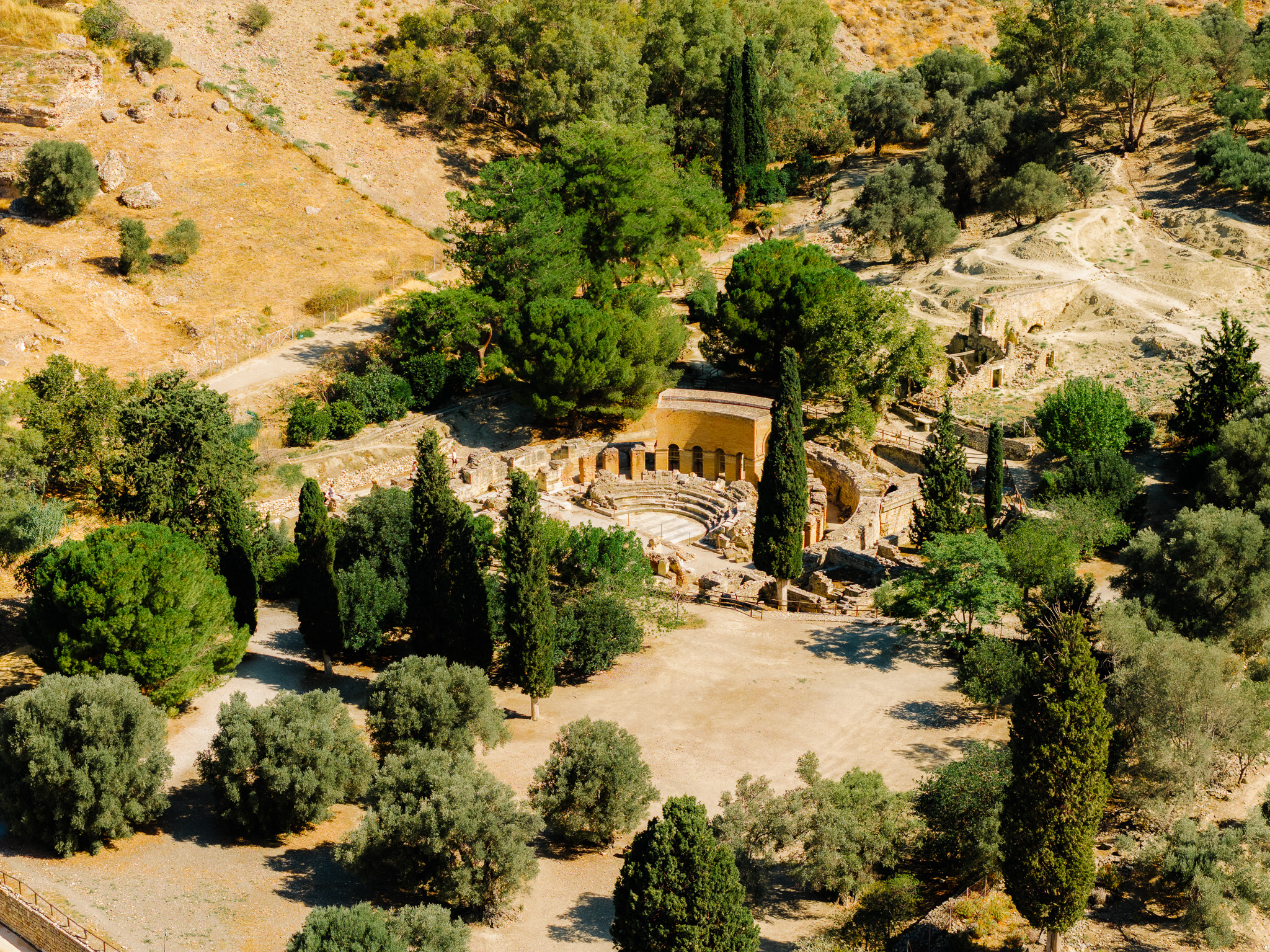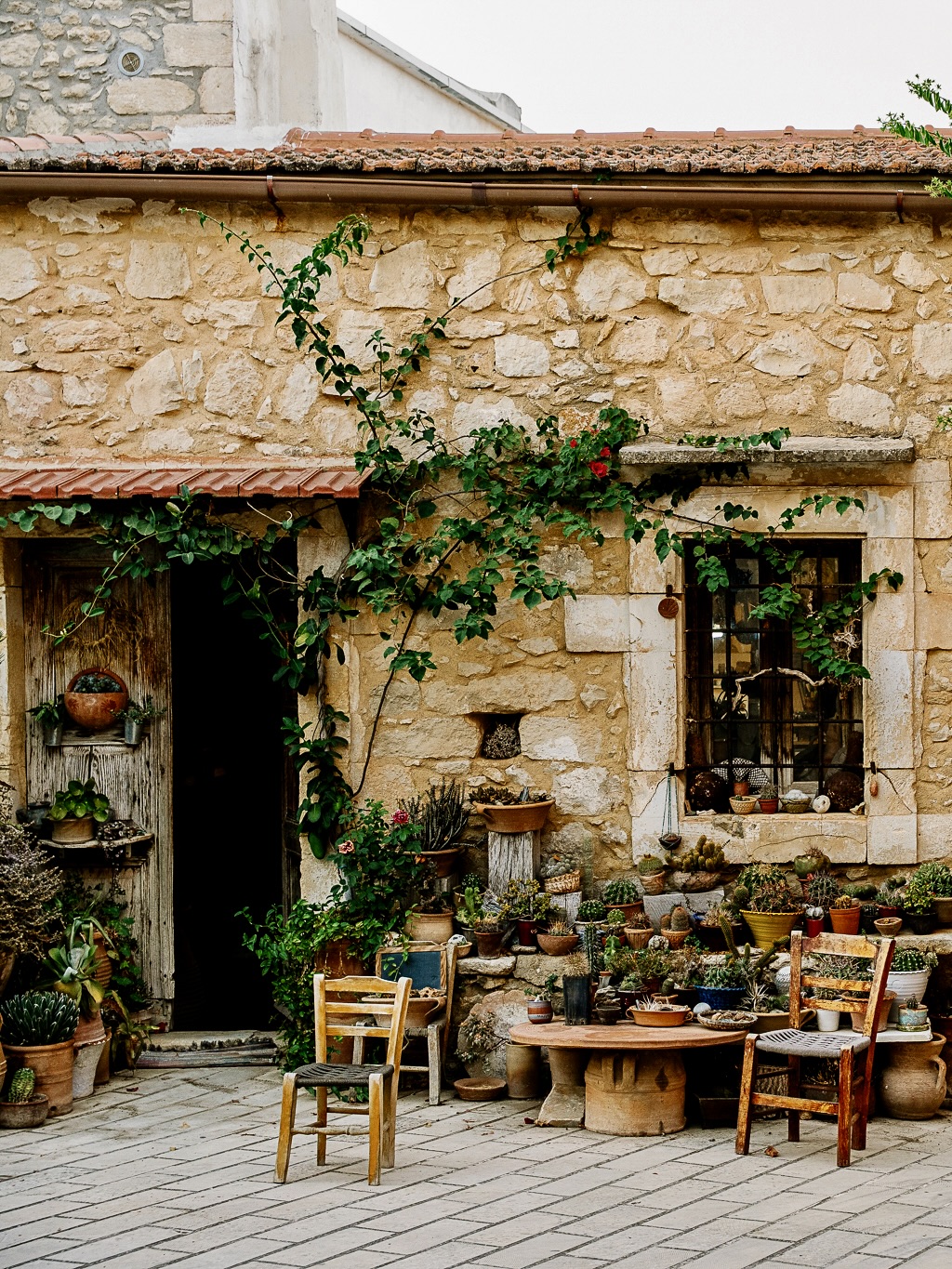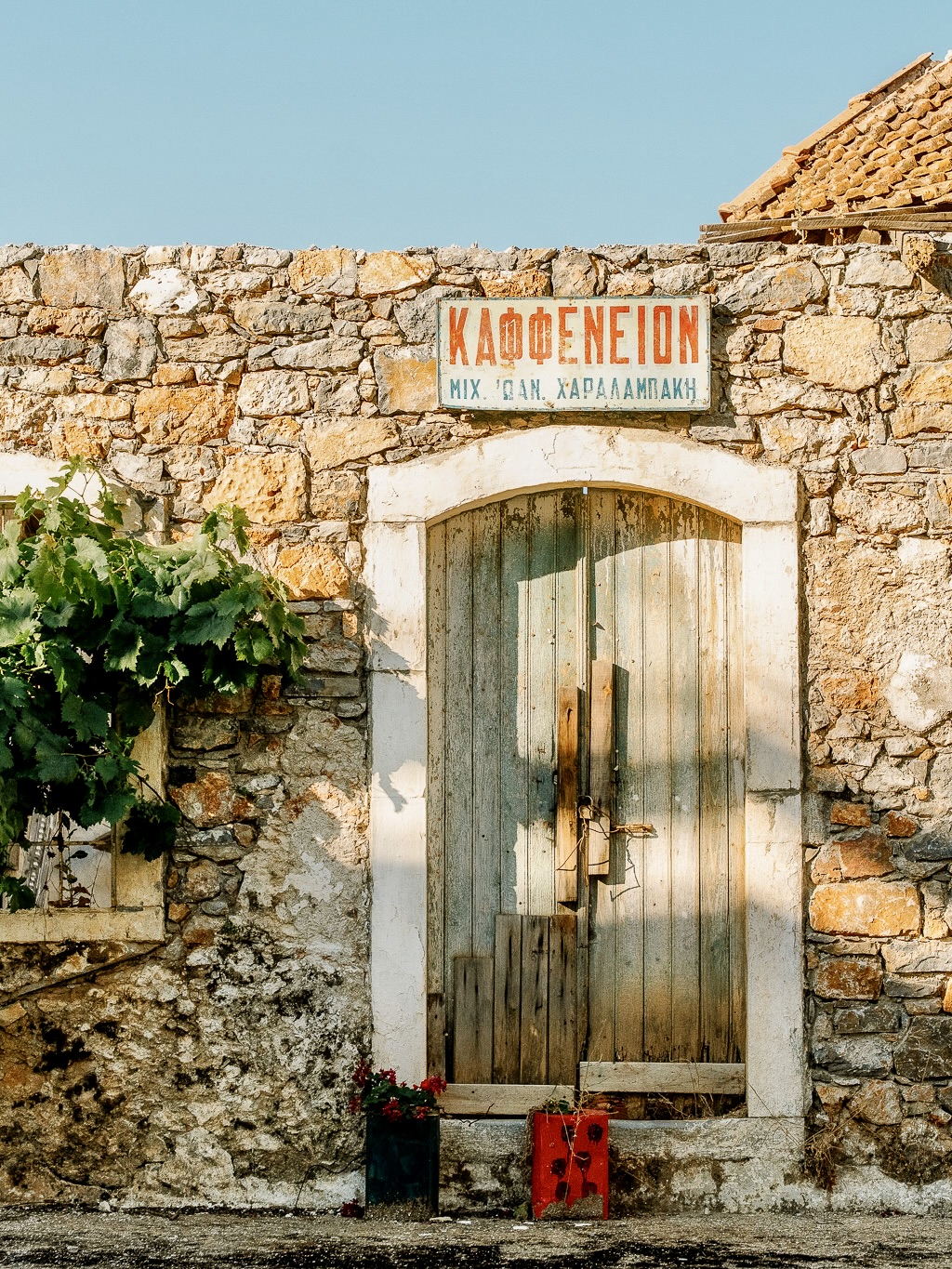Set at the heart of Crete, Heraklion prefecture carries a singular cultural identity – an all-in-one portrait of the island. From the fertile fields of the Messara Plain and storied Minoan palaces to the Libyan Sea’s shores and the sheer Asterousia Mountains – the southernmost mountain range in Greece – the scenery shifts in striking, cinematic succession. Modern Heraklion sits alongside history and major archaeological sites, in constant conversation.
Guarding the prefecture’s southern edge, the Asterousia rise with a stark, untamed beauty, forming one of Crete’s most imposing landscapes. These barren mountains hang over the Libyan Sea, a dramatic, otherworldly tableau recognized for immense ecological and archaeological value as part of the Natura 2000 network. They are also included in UNESCO’s Man and the Biosphere Programme, a designation that underscores the global significance of this singular place. One trip is all it takes to step into a time capsule and uncover the destination’s hidden virtues. This journey leads into the solitude of the village of Ethia, along the path to the Monastery of Agios Nikitas, and finally to Gortyna, Crete’s Roman-era metropolis.
Ethia: a village with a singular aura
The exploration begins 55 km from the city of Heraklion, in Ethia – an officially designated traditional settlement that seems to hover between past and present. Remote and nearly abandoned, the village’s footprint first appears in records in 1577. Flagstone lanes guide you beneath signature stone arches, past old churches, wells, and homes – fragments of a place that once pulsed with life. Today, Ethia’s quiet aura stands as a living testament to the past.
The path to the Monastery of Agios Nikitas
Leaving the village, the route continues along a trail to the Monastery of Agios Nikitas. Set in seclusion and wrapped in nature, the monastery heightens the sense of pilgrimage. Follow the steps below the complex and you’ll reach a hidden beach, perfect for a cooling swim beneath the warm Cretan sun.
Gortyna: Crete’s Roman metropolis
Spread across the fertile Messara Plain, Gortyna (Gortys) was the Roman capital of Crete and one of the island’s largest and most important ancient cities, flourishing especially in Roman times. It surpassed Phaistos in power and served as a seat of authority until earthquakes brought its decline. The archaeological site impresses with its trove of remains: the Odeon, Roman baths, the Church of Agios Titos, statues, the Plane Tree of Zeus and Europa, and of course the famed Gortyn Code – one of the oldest surviving legal inscriptions. Exploring here offers a profound immersion in history, in a place where traces of the past remain vividly present, revealing the grandeur of the Roman city.
A three-dimensional journey
Our route across the Asterousia captured the truth of a place – its contrasts and its memories. We moved through the nostalgic hush of remote Ethia, along the nature-steeped path to Agios Nikitas, and into the splendor of antiquity at Gortyna. It’s a journey that lets you feel the soul of this land – its cultural heritage, its wild nature, and its living traditions – in a way that lingers.
Read also:
Best Places to Stay Now in Heraklion
Sunlit Crests & Cobalt Dreams: 16 Heraklion Beaches in Motion
A Guide to Heraklion’s Essential Restaurants



